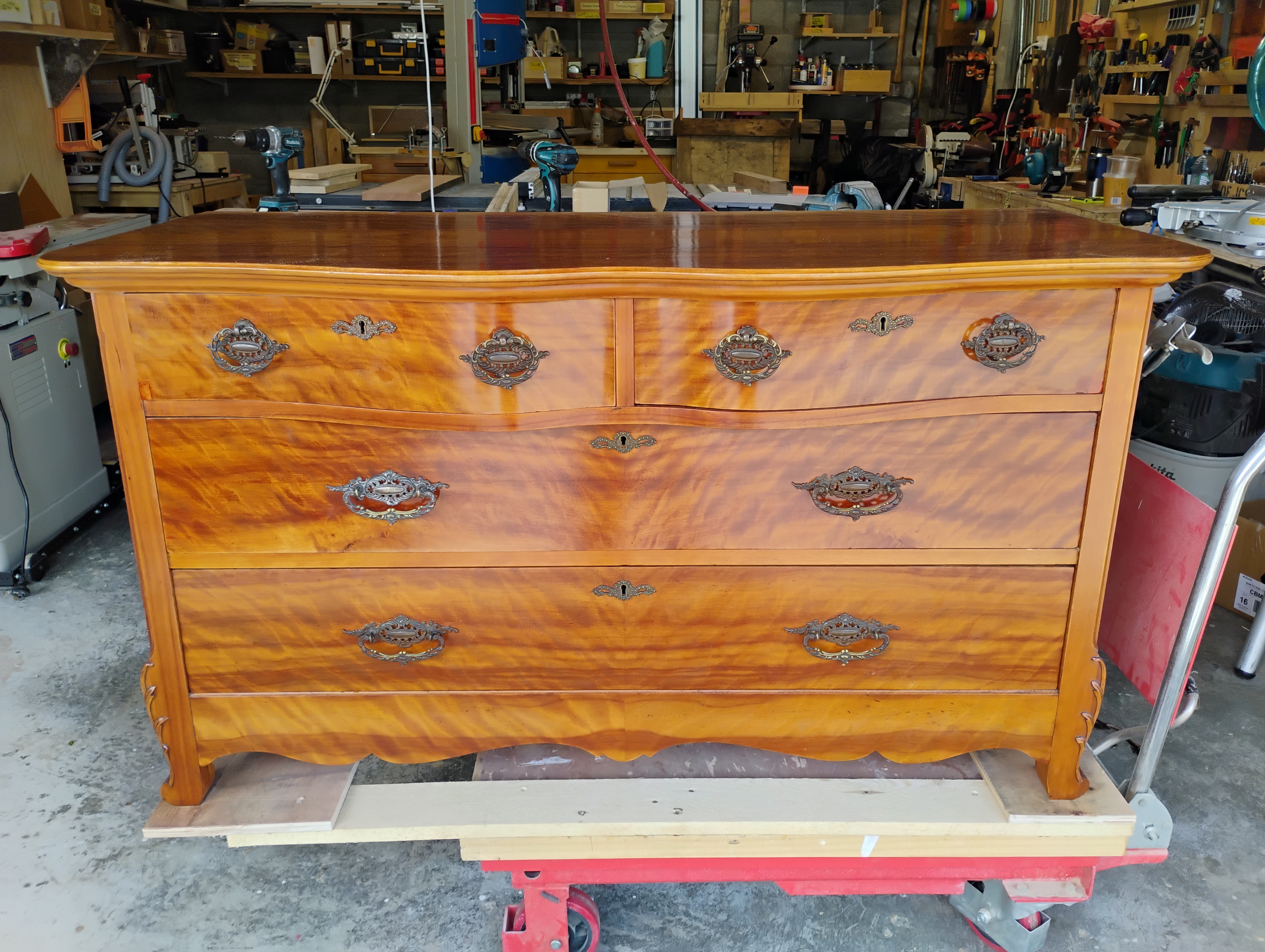Thanks for letting me know about the situation there, as to VOC restraints, sounds like here in California..!!
As to dyes, their very similar to dyes as far as color goes, the big differences are that none of them are light fast (aka) fade resistant, which is especially true of the reds, blues, and yellows, but none of them are permanent. Which means that the color of which is applied will change color over time, and as that happens those colors that are most prone to fading will virtually disappear leaving the other more light fast colors the only color that is left to be seen. This is much more true when "Staining" the wood, as to actually dyeing the wood, which is the old methods used on veneers, much more than thicker wood, which is done under high pressure by a few veneer companies.!
Dyes also give incredible depth and clarity, and I used them mainly for this reason, despite the fact that they are not fade proof.! Though they do give this effect, they only do so when applied to the bare wood/veneer themselves, if used as toners and or especially shading coats, especially individual colors, for example, toning or shading over an already sealed in previously dyed medium walnut stained and sealed, that you or your client finds to be not quite orange or yellow enough, or not quite as brown or or darker brown being what is desired, and then toning over the sealer and declaring with another clear coat, produces an unwanted affect I call or deem to be abstract filtering, much like what happens when you use photography color filters, stacking one color on top of the other which, since the colors are separate and not mixed together, the top filter will be the dominate color, which will be seen especially in natural sunlight, as the dominate color.!! You nor the client will be aware of this, until the finished piece is placed directly in the sunlight or indirect sun where part of the furnishing is being viewed in indoor lighting, such as incandescent, or florescent, etc., for example kitchen cabinets where the fronts of the cabinets are being viewed in interior lighting, but the side of the cabinets are being viewed with the sunlight shining directly on them, also large pieces, like pianos where part of the piano case and top receives direct sunlight during the day, while the rest is never in direct sunlight, which over time, ( which can be either quickly or slowly, ) ....will drastically fade the finish with direct exposure..!! This is even worse when
When the finisher has to then try to rectify the problem and depending on the wood can be difficult to critical as to resolving this problem..! Best to "" ALWAYS"".. make your clients aware of this happening, both verbally and in writing, so that they can place these items away from the source that creates them..!!
Now as to using a layering wet on damp method of tinting or shading, which is something I developed back in the sixties, which is the only way to make sure that the filter layer does not occur, is to do this, keeping in mind that the time and labor will be increased accordingly, at to how many colors are applied by gun, one directly on top of the other.!!
Ex: ...Say your looking for a medium color brown on Maple, or other light whitish colored wood or veneer. You can either mix some yellow, red, and walnut crystals (WC) together starting with the lighter colored dyes first to create orange, then adding the WC to darken or brown the mix. or....you can first spray the yellow dye on thin( color wise), and wet, allow to surface dry, not dry through, then apply the thunder red over it, doing the same way and time and then the more darkened heavier walnut crystals lastly. When you sample this method, you will see, after clear coating the sample(s), the difference in the end visual affect the two methods have, which is very distinguished comparably, especially on hardwoods like walnut, cherry, mahogany, that are highly figured.!
With that I will leave it up to you to pursue these things or not. Always remember that color in and of itself is something that can not be pinned down by objectional means, like science or instrumentation, only by the individual, which varies even among certified color experts.!! My so called medium brown walnut dye or stain, is not going to fit your visual senses of what "you" consider to be a perfect example you deem to be the same, which if you have ever purchased house paint, where there are several leading Mfg. Paint companies, offerings, none of their say apple green or red match each other.! Same is true with all color because different dyes and pigments are not universally used throughout the industry.
One Last recommendation, as to pigments, I was just getting into ink printing pigments, where the size of the pigments were being ground so finely, almost to single micron size, that they actually did penetrate the wood and not just lay on top of it. Unfortunately, they were making them from synthetic pigments and were not offering them in natural earth pigments, but if you search for these locally or near by and can get them you might want to give them a try, aka... Also know as printing inks for computer printers etc.
If you have any further questions, about any upcoming client projects, feel free to contact me.
Chemmy

